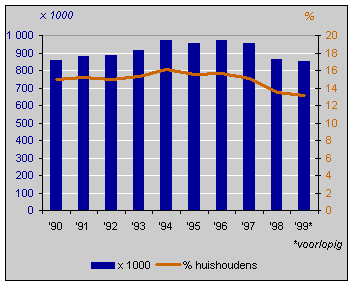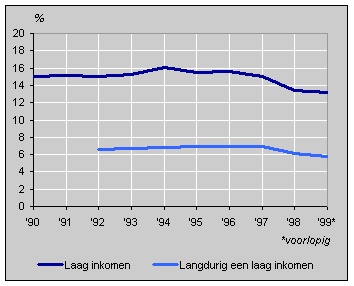Fewer households in low income bracket

The number of households below the low income threshold fell further in 1999. In that year 850,000 households had a low income , 10,000 fewer than one year previously and 120,000 fewer than in 1996. One of the causes of for this decrease was a tax measure for the over 65s, which resulted in many people in this age group with a supplementary pension staying above the threshold.
Nearly 1.7 million people in the Netherlands lived in low income households in 1999. More than half a million of them children.
In 1999 there were just about as many households with a low income as in the beginning of the nineties. However, as the total number of households increased substantially in the same period, the percentage of households with a low income – 13.2% in 1999 – decreased to the level of the late seventies and early eighties.
In the first half of the nineties there was a rise in the number of people receiving unemployment benefit. Moreover, the purchasing power of people with social benefits declined and the number of people below the low-income threshold grew to over 950,000. From 1994 to 1997 it remained stable at this level. In 1997 it started to decrease and by 1999 the increase in the beginning of the nineties had been eliminated.
Households with a low income

The number of households with a long-term low income also decreased at the end of the nineties. In 1999, 373,000 households – nearly 6% – had had an income below the low income threshold for four years or longer. This was 60,000 fewer than in 1997.
Households with long-term low income

Ger Linden